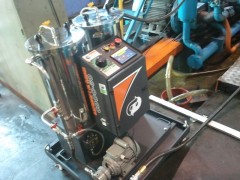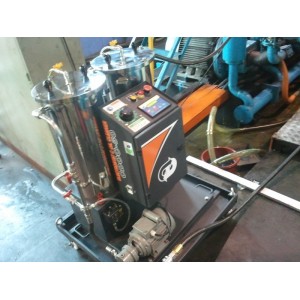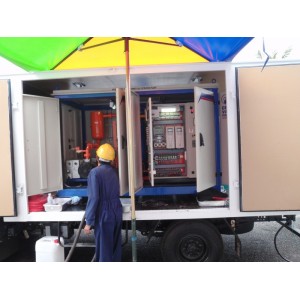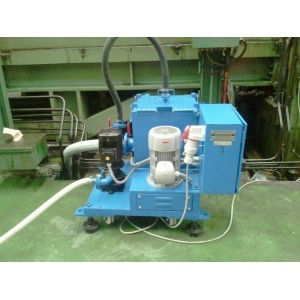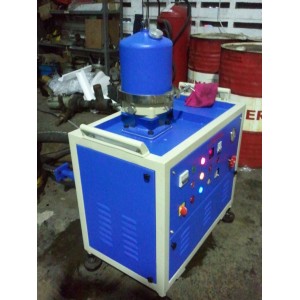Electrostatic Oil Cleaning
Electrostatic oil cleaning removes the majority of insoluble contaminants in oils. As opposed to mechanical filters that can remove particles only down to 5 micron, electrostatic oil cleaners can remove particles as small as 0.01 micron.
Analyses of used hydraulic and turbine oils have shown that more than 70 percent of their contaminants are smaller than 1 micron. The ability of electrostatic separators to remove contaminants smaller than 1 micron provides several performance advantages over mechanical filters.
How Electrostatic Oil Cleaning Technology Works
Electrostatic oil cleaning is based primarily on the principle of Coulomb's force. Dielectric contamination collectors are strategically sandwiched between electrodes. High, direct current voltage is applied as the oil flows through the media, electrically charging the insoluble particles. The charged particles are then attracted to either the anode or cathode, depending upon their charge, and are captured in the collector. A secondary influence called the gradient force assists in agglomerating the particles prior to collection. The combination of forces allows extremely fine metallic, nonmetallic, organic or inorganic particles to be captured.
In practice, electrostatic oil cleaners are comprised of a cleaning chamber, pump and electrical control console. The oil is pumped from the lubricant reservoir up through the cleaning chamber, requiring several passes through the device before it is thoroughly cleaned. The media used in the collectors is plated with sharp angles and a rough finish to help maximize the effective surface area. It typically takes between 20 and 40 passes of the reservoir volume to remove most insoluble contaminants. After 40 passes, the electrostatic oil cleaner will begin to scrub the machine's internals, removing degradation by-products.
Electrostatic oil cleaners can also be used in a number of applications and a wide range of base stocks
